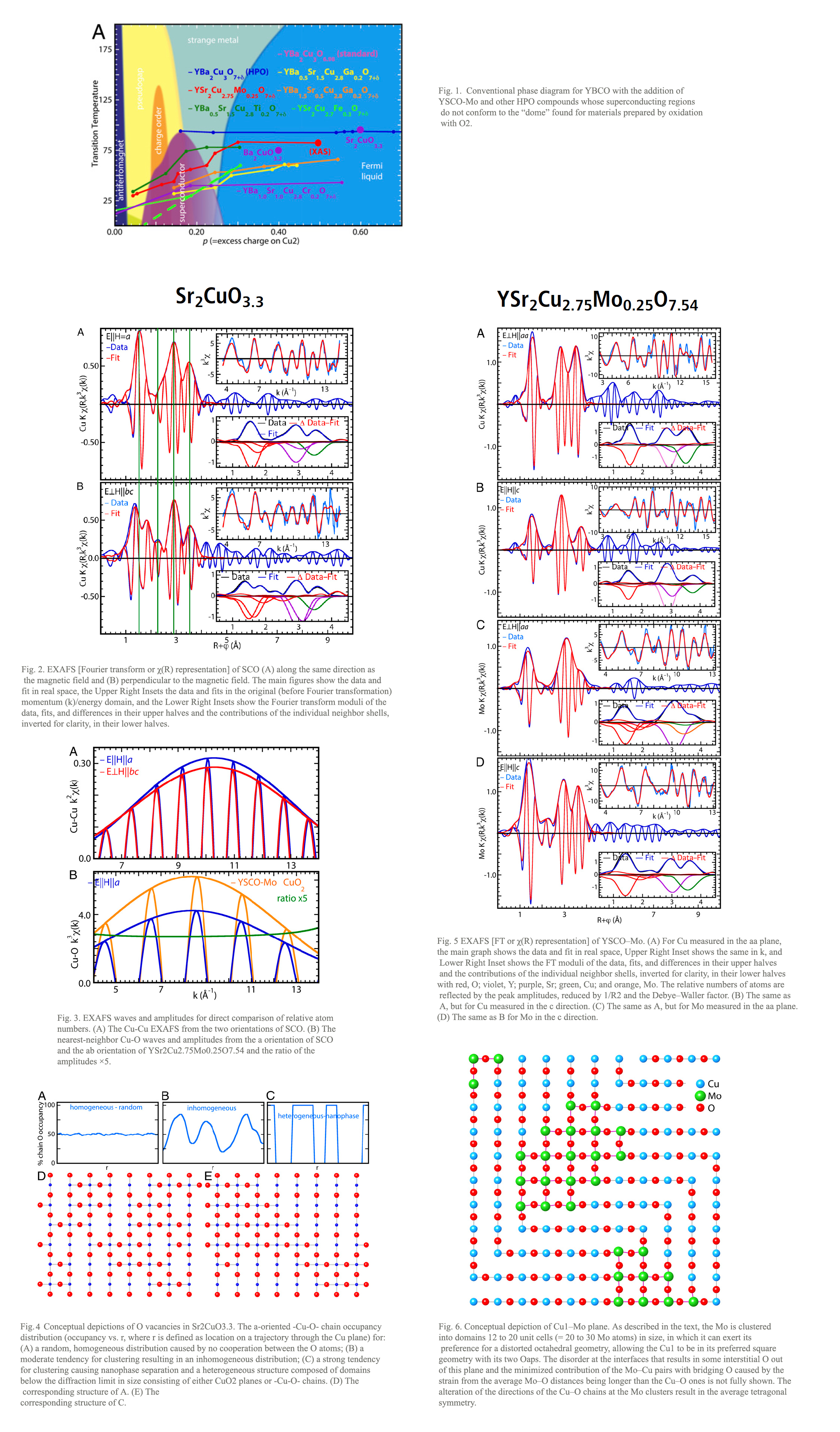具有非完整CuO2面的高Tc过掺杂铜氧化物超导体
(Local structure of Sr2CuO3.3, a 95 K cuprate superconductor without CuO2 planes )
S. D. Conradson, T. H. Geballe, C. Q. Jin, L. P. Cao, G. Baldinozzi, J. M. Jiang, M. J. Latimer & O. Mueller
PNAS 117, 4565 (2020)
(Local lattice distortions and dynamics in extremely overdoped superconducting YSr2Cu2.75Mo0.25O7.54 )
. S. D. Conradson, T. H. Geballe, A. Gauzzi, M. Karppinen, C. Q. Jin, G. Baldinozzi, W. M. Li, L. P. Cao, E. Gilioli, J. M. Jiang, M. Latimer, O. Mueller & V. Nasretdinova
PNAS 117, 4559 (2020)
| A common characteristic of many “overdoped” cuprates prepared with high-pressure oxygen is Tc values ≥ 50 K that often exceed that of optimally doped parent compounds, despite O stoichiometries that place the materials at the edge or outside of the conventional boundary between superconducting and normal Fermi liquid states. |
| The local structure of the highly “overdoped” 95 K superconductor Sr2CuO3.3 determined by Cu K X-ray absorption fine structure (XAFS) at 62 K in magnetically oriented samples shows that 1) the magnetization is perpendicular to the c axis; 2) at these levels of precision the Cu sublattice is tetragonal in agreement with the crystal structure; the O sublattice has 3) continuous -Cu-O- chains that orient perpendicular to an applied magnetic field; 4) approximately half-filled -Cu-O- chains that orient parallel to this field; 5) a substantial number of apical O vacancies; 6) O ions at some apical positions with expanded Cu-O distances; and 7) interstitial positions that imply highly displaced Sr ions. These results contradict the universally accepted features of cuprates that require intact CuO2 planes, magnetization along the c axis, and a termination of the superconductivity when the excess charge on the CuO2 Cu ions exceeds 0.27. These radical differences in charge and structure demonstrate that this compound constitutes a separate class of Cu-O–based superconductors in which the superconductivity originates in a different, more complicated structural unit than CuO2 planes while retaining exceptionally high transition temperatures. |
| XAFS measurements at 52 K on samples of high-pressure oxygen (HPO) YSr2Cu2.75Mo0.25O7.54, Tc = 84 K show that the Mo is in the (VI) valence in an unusually undistorted octahedral geometry with predominantly Mo neighbors that is consistent with its assigned substitution for Cu in the chain sites of the structure. Perturbations of the Cu environments are minimal, although the Cu X-ray absorption near-edge structure (XANES) differs from that in other cuprates. The primary deviation from the crystal structure is therefore nanophase separation into Mo- and Cu-enriched domains. There are, however, indications that the dynamical attributes of the structure are altered relative to YBa2Cu3O7, including a shift of the Cu-apical O two-site distribution from the chain to the plane Cu sites. Another effect that would influence Tc is the possibility of multiple bands at the Fermi surface caused by the presence of the second phase and the lowering of the Fermi level. |
